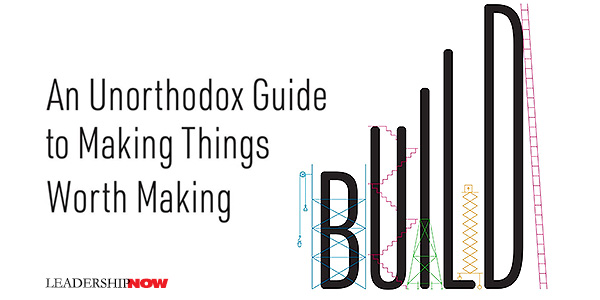 |
 |
07.12.22

Build: An Unorthodox Guide to Making Things Worth Making
AFTER building the iPod, the iPhone, and co-founding Nest, Tony Fadell’s latest venture is an investment firm called Future Shape. They call themselves “mentors with money.” Their aim is to not only provide funding but help when founders really need it. His book is that without the money. Build: An Unorthodox Guide to Making Things Worth Making is an incredible opportunity to learn how to start, grow, and exit a business from someone who has been through it all. Obviously, he didn’t do everything right along the way, but he did learn from it, and he shares the lessons with us. He divides the lessons into six topics: Build Yourself, Build Your Career, Build Your Product, Build Your Business, Build Your Team, and Be CEO. He says the lessons he shares are “unorthodox” because they are old school. Although everyone dreams of reinvention, disruption, and blowing up old ways of thinking, he has learned that there are “certain things you can’t blow up. Human nature doesn’t change, regardless of what you’re building, where you live, how old you are, how wealthy or not.” It’s ineffective to try to disrupt thinking and behaviors when you haven’t taken the time to find out why it is the way it is. This book, he writes, is “for anyone who wants to create something new, who is chasing excellence, who doesn’t want to waste their precious time on this precious planet,” in a way that he has seen work for himself and others. Fadell begins with Build Yourself. The question to ask when you are starting out is not, “How much money do I want to make?” but “What do I want to learn?” Follow your curiosity. That’s what you’re looking for when you’re young, when you think you know something then suddenly realize you have no idea what you’re doing: a place where you can work as hard as you can to learn as much as you can from people who can make something great. So even if the experience kicks your ass, the force of that kick will propel you into a new stage of your life. As an individual contributor, your job is to sweat the details and focus on your work. But you also need to be doing two things: looking up and around. This will help you to avoid walking into a brick wall. On a project, everyone is on a parallel course heading in the same direction, as shown in the diagram below. The executive team is supposed to be looking out into the horizon, but sometimes they get caught up in the day-to-day.
Your executive team and managers are supposed to be looking out for roadblocks. They’re supposed to warn you so you can adjust course, or at least grab a helmet. But sometimes they don’t. As you grow, your responsibilities grow. When you a given the responsibility to manage a team, your job fundamentally changes. You no longer are tasked with doing what you were so good at. Your job is to manage others. The outcome is your business. When you get deep into the team’s process of doing work rather than the actual work that results from it, that’s when you fall headfirst into micromanagement. Fadell recounts the start of his Silicon Valley career at General Magic (which he calls “the most influential startup nobody has ever heard of”), his move to Phillips, and eventually to Apple. He notes that the “basic technology for the first iPod wasn’t designed at Apple.” It came from a project he was working on at Phillips that never gained traction. When building your product, remember that your product isn’t just your product. It is the whole user experience. Which is why you should be “prototyping your marketing long before you have anything to market.” That marketing should tell a story—the story that is part of the product’s development. Your product’s story is its design, its features, images and videos, quotes from customers, tips from reviewers, conversations with support agents. It’s the sum of what people see and feel about this thing that you’ve created. Fadell says the “best ideas are painkillers, not vitamins.” He adds, “Vitamin pills are good for you, but they’re not essential.” But you need painkillers. The best teams are multigenerational. “Nest employed twenty-year-olds and seventy-year-olds. Experienced people have a wealth of wisdom that they can pass on to the next generation and young people can push back against long-held assumptions.” Everything needs to be designed, so we should all be designers. It’s a way of thinking. We should all be design thinkers. Design thinking gets you to really understand the issue at hand. To look at it from all sides. You shouldn’t outsource a problem before you try to solve it yourself, especially if solving that problem is core to the future of your business. If it’s a critical function, your team needs to build the muscle to understand the process and do it themselves. There is a lot of hard-earned wisdom in this book. I have only scratched the surface. Build is a must-read if you are just starting out, but it will benefit you at any age. And remember, “If you’re not solving a real problem, you can’t start a revolution.” 
Posted by Michael McKinney at 12:09 PM
|
BUILD YOUR KNOWLEDGE
 

How to Do Your Start-Up Right STRAIGHT TALK FOR START-UPS 
Grow Your Leadership Skills NEW AND UPCOMING LEADERSHIP BOOKS 
Leadership Minute BITE-SIZE CONCEPTS YOU CAN CHEW ON 
Classic Leadership Books BOOKS TO READ BEFORE YOU LEAD |